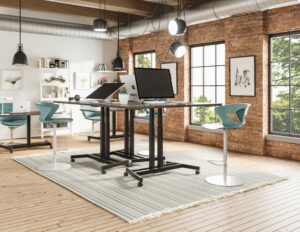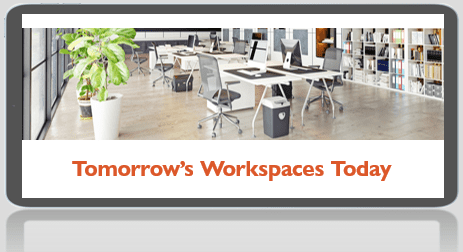Beyond greenwashing and greenhushing: What actually makes a sustainable workplace?
What actually makes a sustainable workplace?
Walk into modern offices and you’ll see the motifs of sustainability: a living wall in reception, branded reusable mugs in the pantry, perhaps even a rooftop beehive. These are the sort of things that photograph well and tick boxes in annual reports. But what truly makes an office “green”?

The uncomfortable truth is that many of these initiatives fall into the category of greenwashing, by that we mean things that sound impressive but don’t stand up to more rigorous environmental scrutiny. Consider a switch to recycled paper cups, this by itself is good, but it’s offset if you’re running AC in empty meeting rooms all night.
At the same time, another trend is emerging: greenhushing. This is when organizations with genuine progress to share stay silent, worried that one misstep will trigger accusations of hypocrisy. Analysts note that both greenwashing and greenhushing “erode trust” and “distort markets”.
Is there a gap in perception between workers and managers?
Research that we did in December 2024 suggests there is such a gap. In our survey of 1000 office workers and 200 facilities managers across six countries, 97% of companies reported having at least one sustainability initiative in place. Yet only 59% of Facilities Managers ranked sustainability as a strategic priority and even fewer could provide evidence of falling energy use, reduced waste or lower emissions.
This echoes wider findings: facilities managers often rate their workplaces highly for environmental performance, while employees give lower scores. Staff see the contradictions up close: think things like redundant laptops stacked in cupboards while new ones are purchased each year, desks and chairs being sent to landfills and so on.
Measurement as the foundation
Without reliable data on energy, waste and embodied carbon, leadership cannot manage performance effectively. The World Economic Forum reports that less than a quarter of companies have tools to measure indirect emissions and fewer than 10% publish data for new furniture purchases. Without clear measurement, it’s impossible to establish forecasts and targets. This is one area where independent expertise is vital as it’s unreasonable to expect every company to be able to invest in such tools.
Another issue is the mismatch between what employees value and what companies deliver. Asked to identify what makes a sustainable workplace, respondents in our research overwhelmingly chose renewable energy (and they’d be right, everything is downstream of energy) followed by verified low‑carbon materials and waste prevention. Yet the most common initiatives in offices are often just branding opportunities like the ones mentioned above.
The circular economy: sustainability done right
What does make a difference then? Energy mix is key, but our influence as office workers over energy policy is limited. One of the best examples where we can have a hard impact as office designers and managers is in circular practices. This means keeping products and materials in use for as long as possible. In the context of the office this means you should be refurbishing and re-using furniture, installing modular flooring that can be returned to suppliers, IT leasing with take‑back, selling on surplus fixtures and so on.
Let’s provide an example: Manufacturing a new ergonomic chair emits around 70 kg of CO2, mostly from steel and aluminium while refurbishing the same chair emits fewer than 10 kg. Multiply that across a 100‑seat office and the impact is equivalent to taking a family car off the road for a year. Our own Renew Centre network has already diverted more than 276,000 items of furniture, IT and AV equipment since 2015, saving 17,000 tons of CO2 and redirecting thousands of items to schools and charities.
Circularity is efficient from a costing perspective too. You avoid raw material costs, freight charges and disposal fees. With expanding carbon prices it’s reasonable to expect the financial gap between new and renewed assets to grow, so it’s healthy for long-term forecasting too.
Avoiding greenwashing
The lesson for organisations in a nutshell: marketing is good when it amplifies good ideas, but it must follow substance. Satellite imagery can expose false claims about rooftop solar, product passports can reveal whether “eco‑friendly” furniture was shipped halfway around the world. Publish raw numbers, invite independent assessments and, one area that is often missed, vet suppliers.
In an increasingly cynical age, people are quick to detect exaggeration. Keep that in mind.
Related stories
Discover smart office layouts that boost productivity, enhance collaboration, and integrate modern tech for a flexible, future-ready workspace.
Maximise your small office space with smart desk ideas and space-saving layouts that boost productivity and create a stylish, efficient workspace.
Around half of all Facilities Managers plan to downsize their office space in the next three years. How, and why?





























